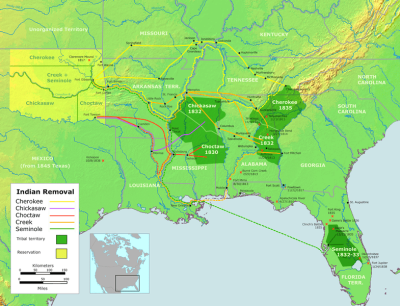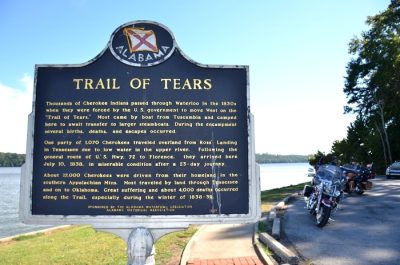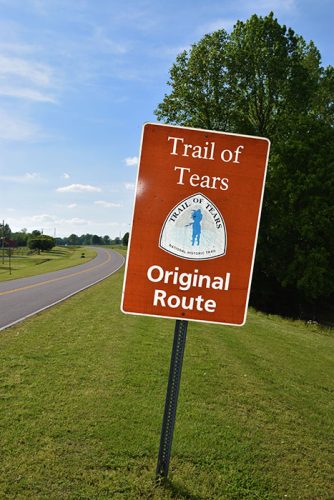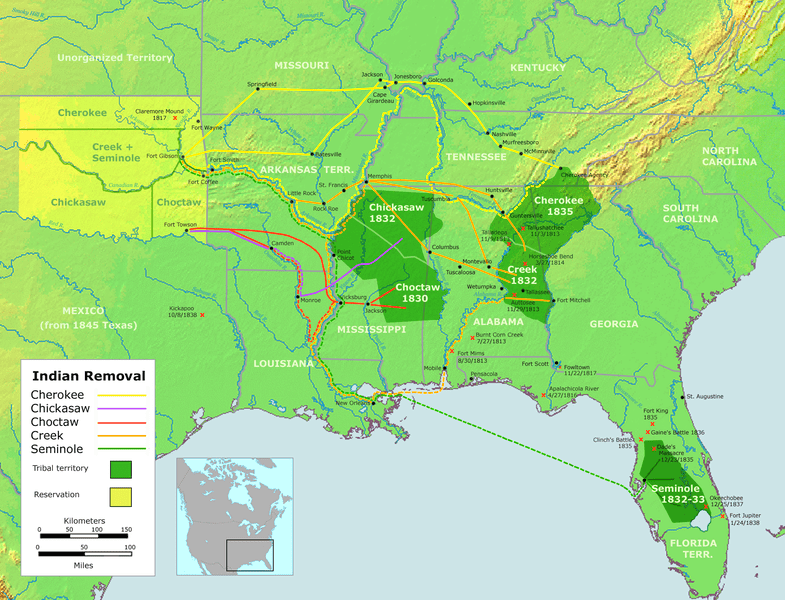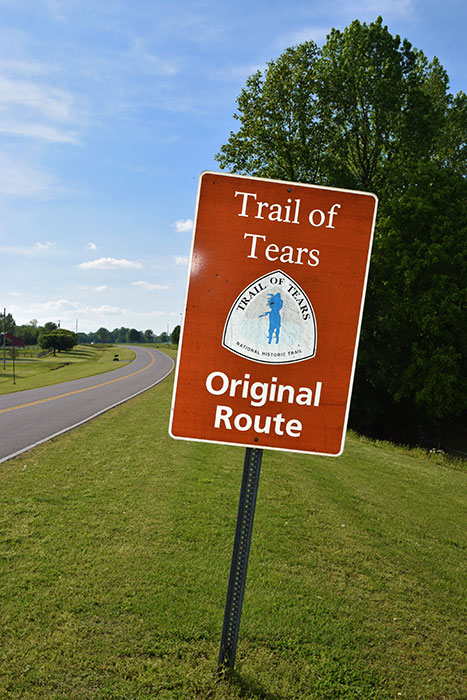Trail of Tears National Historic Trail
The Trail of Tears National Historic Trail is a somber commemoration of the forced removal of numerous Native American tribes from their ancestral lands in the southeastern United States to Indian Territory, now Oklahoma, during the 1830s. Alabama played a significant role in this event, and this article will delve into the Trail of Tears’ impact on Alabama and the affected Native American tribes.
Alabama was home to various Native American tribes, including the Creek, Cherokee, Choctaw, Chickasaw, and Seminole, with the Creek and Cherokee being the most affected by the Trail of Tears. The Treaty of Fort Jackson in 1814 ended the Creek War, leading the Creek to cede much of their land in Alabama to the United States government. On the other hand, the Cherokee had a sophisticated society with a written language, constitution, and legal system but faced threats from white settlers and Georgia, which claimed the Cherokee land as its own. In 1830, the Indian Removal Act authorized the forced removal of all Native American tribes in the southeastern United States to Indian Territory, leading to a legal battle by the Cherokee Nation to keep their land.
The Cherokee were given two years to move voluntarily, but when the deadline passed, the United States government sent troops to remove them by force. In 1838, over 16,000 Cherokee were rounded up and placed in detention camps before being forced to march along the Trail of Tears. The journey was treacherous, and many Cherokee died from starvation, exposure, and disease.
The Trail of Tears in Alabama began in Ross’s Landing, currently Chattanooga, Tennessee, and followed a path through northern Alabama, where the Cherokee faced harsh treatment from the military and local settlers. They marched through swamps and rivers, resulting in many deaths. The rough terrain and harsh weather in Alabama made the journey more challenging.
The Trail of Tears passed through several significant sites in Alabama, including Tuscumbia Landing and Muscle Shoals, where the Cherokee camped before continuing their journey. The Cherokee Removal Memorial Park in Waterloo, one of the most significant sites on the Trail of Tears in Alabama, commemorates the thousands of Cherokee who died during the forced removal.
The Trail of Tears affected not only the Cherokee but also the Creek and other tribes, such as the Choctaw, Chickasaw, and Seminole. The Creek were forced to cede more land to the United States government and were eventually removed to Indian Territory.
The Trail of Tears National Historic Trail serves as a reminder of the resilience and suffering of Native American tribes in the face of adversity, symbolizing the deep wounds inflicted on their communities and the need for reconciliation and healing. In Alabama, the Trail of Tears is an integral part of the state’s history and culture, with sites like the Cherokee Removal Memorial Park reminding people of the event’s impact. The state has taken steps to acknowledge the Trail of Tears, with the Alabama State Legislature passing a resolution in 2019 apologizing for the state’s role in the event and recognizing the importance of reconciliation and healing between Native American communities and the state.
Overall, the Trail of Tears remains a tragic event in American history that forced thousands of Native Americans from their ancestral lands, affecting the Cherokee, Choctaw, Creek, Chickasaw, and Seminole tribes, with an estimated 60,000 to 100,000 Native Americans affected. The Trail of Tears is a National Historic Trail, and its remembrance allows a better understanding and appreciation of Native American cultures’ resilience and strength, contributing to a better future for everyone.
Points of interest: Trail of Tears National Historic Trail
- Cherokee Nation Capitol Building Replica, Centre: This is a replica of the Cherokee Nation’s Capitol Building, which was built in 1827 in New Echota, Georgia. The building served as the center of government for the Cherokee Nation until their forced removal in 1838. The replica building in Centre is a tribute to the Cherokee Nation’s legacy and the Trail of Tears.
- Chief Ladiga Trail, Piedmont: This 33-mile trail runs through Calhoun and Cleburne counties and follows the route of the former Seaboard Air Line Railroad. The trail passes through several small towns and offers scenic views of the surrounding countryside.
- Fort Payne Cabin Historic Site: This historic site is located in Fort Payne and is the site of a cabin that belonged to the Ross family. Andrew Ross, a Cherokee leader who opposed removal, lived in the cabin with his family. The cabin has been restored and is now a museum.
- Guntersville Museum and Cultural Center, Guntersville: This museum features exhibits that highlight the history and culture of the Guntersville area. One exhibit is dedicated to the Trail of Tears and tells the story of the Cherokee people and their forced removal.
- John Looney Cabin Site Memorial, Fort Payne: This is a memorial to John Looney, a Cherokee leader who opposed removal. The memorial is located at the site where Looney’s cabin once stood.
- Old Trace, Natchez Trace Parkway, Cherokee: This section of the Natchez Trace Parkway follows the route of the Old Trace, which was a footpath used by Native Americans, European explorers, and early settlers. The Old Trace was used by many Cherokee people during their forced removal.
- Wills Town Mission Cemetery: This cemetery is located in Fort Payne and is the final resting place of several Cherokee people who died during the Trail of Tears. The cemetery is a somber reminder of the hardships and loss that the Cherokee people experienced during their forced removal.
- Cherokee Leader Andrew Ross Home (Fort Payne): This historic home belonged to Cherokee leader Andrew Ross, who opposed the Indian Removal Act. The home has been restored and is now a museum that showcases the history and culture of the Cherokee people and their forced removal.
- Waterloo Landing: In 1838, during the Indian Removal, Waterloo Landing served as a temporary campsite along the banks of the Tennessee River. It was used as a departure point for detachments of people who boarded steamboats and traveled westward on the Tennessee River towards Paducah, Kentucky.

